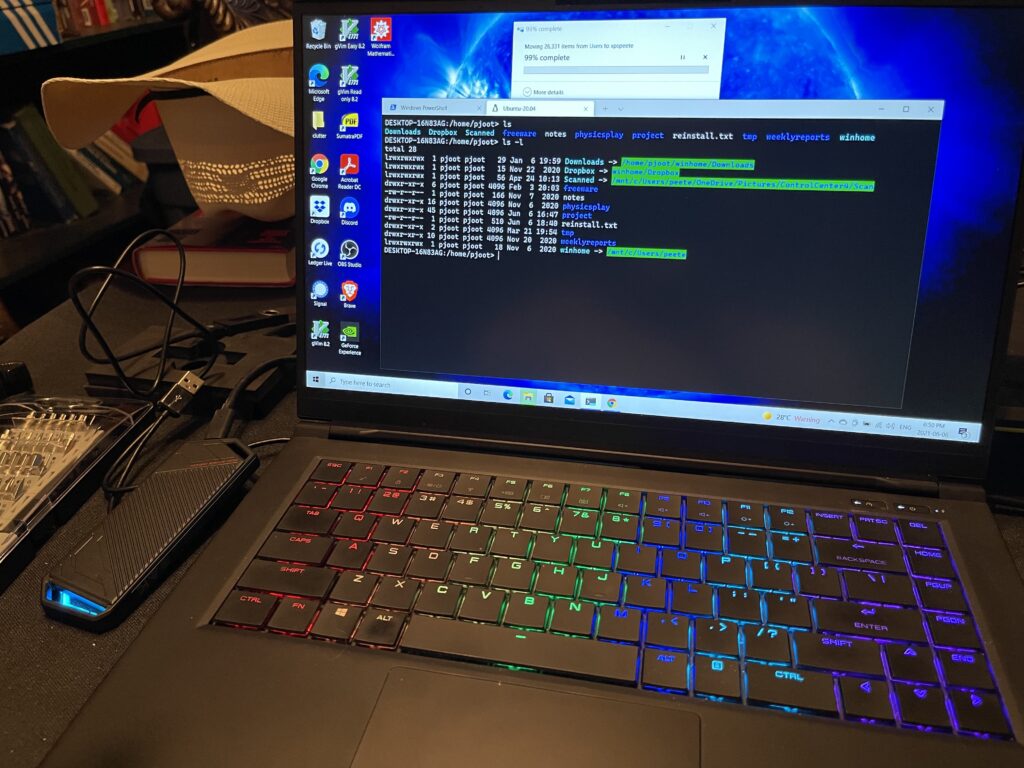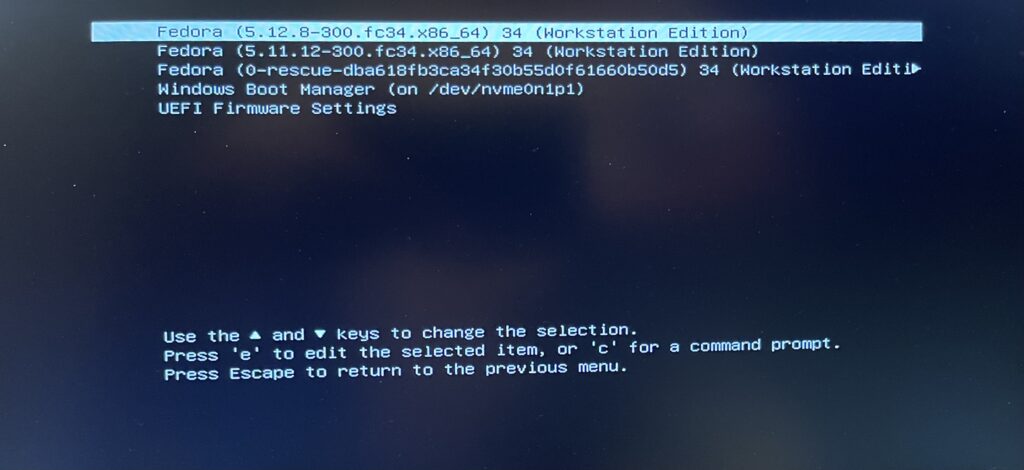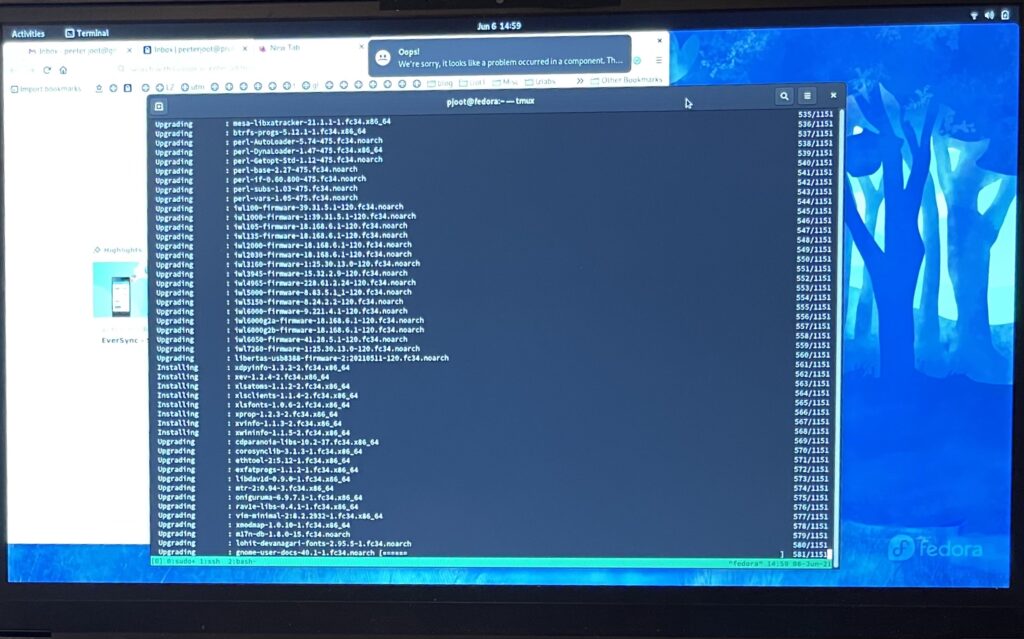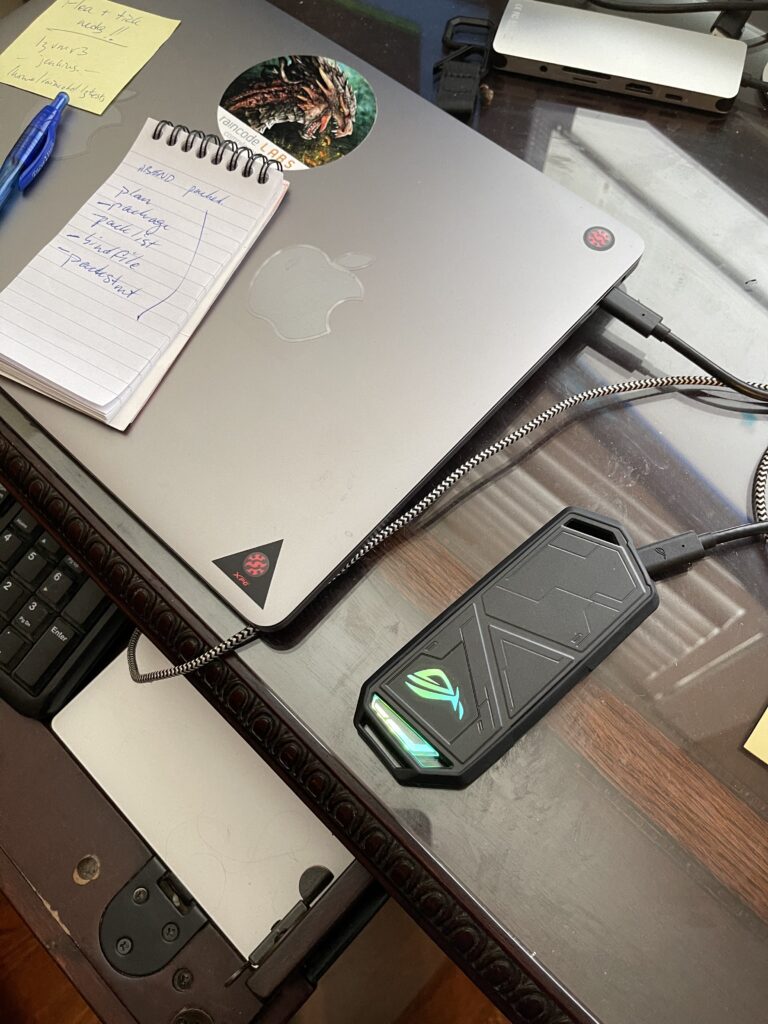I used my funky usb-C external drive enclosure to facilitate an operating system switcheroo today. I wanted to try a Windows/Linux dual boot configuration, something that I haven’t done in a long time. There was enough room on the original 1Tb SSD, but I’d bought myself a 2Tb SSD for backups (and crypto-mining experimentation) and decided to repurpose that as a replacement drive for my Windows (xpg) laptop.
Since both my new and old drives were both M2 SSD drives, I was able to pop the old drive and put it into my external enclosure. If I messed up reinstalling either Windows or Linux, then at least theoretically, I could have recovered by just putting the old drive back in.
I didn’t mess up the installation and now have a brand new dual boot configuration with Windows-10 and Fedora-34. I’ve got WSL-2 + ubuntu-20 on the Windows side:
and a grub boot selector for the operating systems:
and the Fedora-34 desktop configuration for the native Linux installation:
I opted for Fedora over Ubuntu, since I figured both track the state of the art fairly well, but with Fedora I don’t have to keep looking up the dpkg equivalents of the rpm commands I’ve used for so many years and have memorized.
I have a whole bunch of install fine tuning to do still, but have all the bare bones now installed on both sides.
Having an external enclosure for the SSD made migration really easy. I was able to mount it after my Windows reinstall was done, and just move my old \Users\peete directory. I’ll have to weed out the bits that I don’t care about, but I’m now ready to blast away the partitions from the original laptop installation, and then use that 1Tb drive for backups and file transfers between machines.



